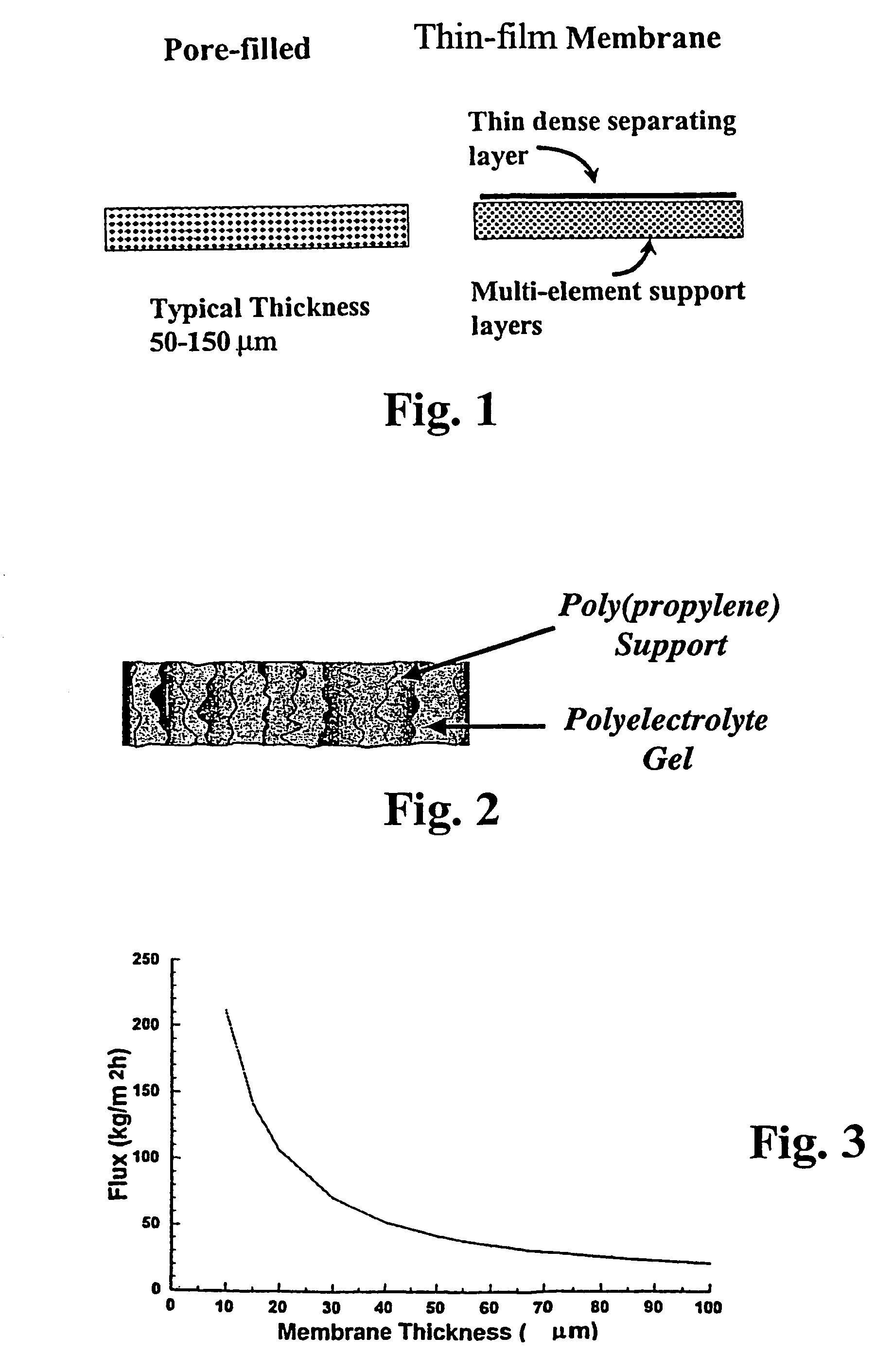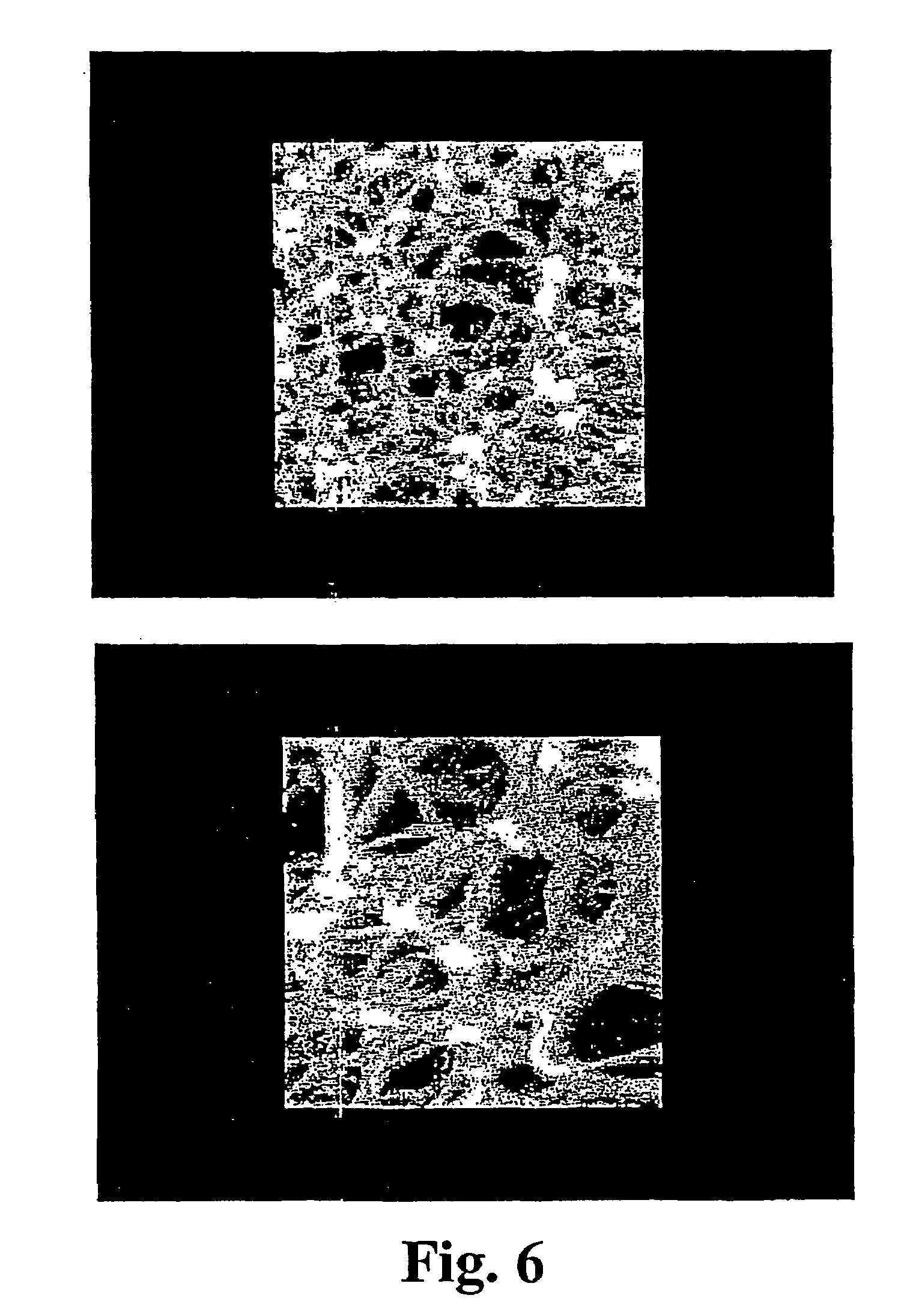Asymmetric gel-filled microporous membranes
a gel-filled microporous membrane and gel-filled technology, applied in the field of new materials, can solve the problems of reducing the thickness of the polymer normally accompanied by a loss of mechanical strength, and it is difficult to control the location of the grafted polymer using plasma activation techniques, and achieves the effect of superior properties and higher flux
- Summary
- Abstract
- Description
- Claims
- Application Information
AI Technical Summary
Benefits of technology
Problems solved by technology
Method used
Image
Examples
Embodiment Construction
[0028]The crosslinked gel is preferably a hydrogel and more preferably is a polyelectrolyte hydrogel. The crosslinked gel is preferably comprised of crosslinked polymers or copolymers. The microporous substrate may comprise a porous substrate formed of polymeric material, such as polypropylene, polyethylene, poly(vinylidene difluoride), poly(tetrafluoroethylene), poly(esters), nylons, polysulfones, poly(carbonates), cellulose or cellulose acetate, or ceramics or porous glasses into the pores of which may be introduced crosslinked polyelectrolytes or hydrogels anchored within the substrate pores. The incorporated crosslinked polyelectrolyte or hydrogel need not be chemically attached or grafted to the microporous support.
[0029]For microporous substrates, the average pore diameters may vary widely but preferably range from about 0.1 to about 10 microns, more preferably from about 0.2 to about 5 microns and particularly from about 0.2 to about 2.0 microns. Pore diameters for microporou...
PUM
| Property | Measurement | Unit |
|---|---|---|
| pore diameter | aaaaa | aaaaa |
| pore diameter | aaaaa | aaaaa |
| pore diameter | aaaaa | aaaaa |
Abstract
Description
Claims
Application Information
 Login to View More
Login to View More - R&D
- Intellectual Property
- Life Sciences
- Materials
- Tech Scout
- Unparalleled Data Quality
- Higher Quality Content
- 60% Fewer Hallucinations
Browse by: Latest US Patents, China's latest patents, Technical Efficacy Thesaurus, Application Domain, Technology Topic, Popular Technical Reports.
© 2025 PatSnap. All rights reserved.Legal|Privacy policy|Modern Slavery Act Transparency Statement|Sitemap|About US| Contact US: help@patsnap.com



